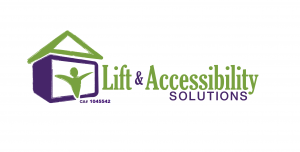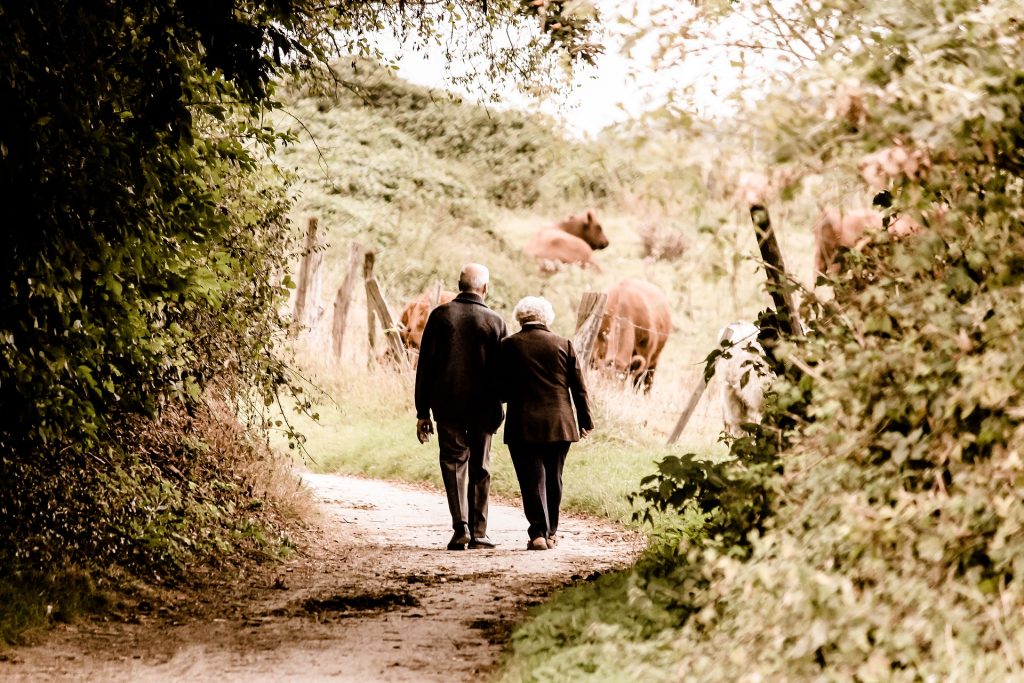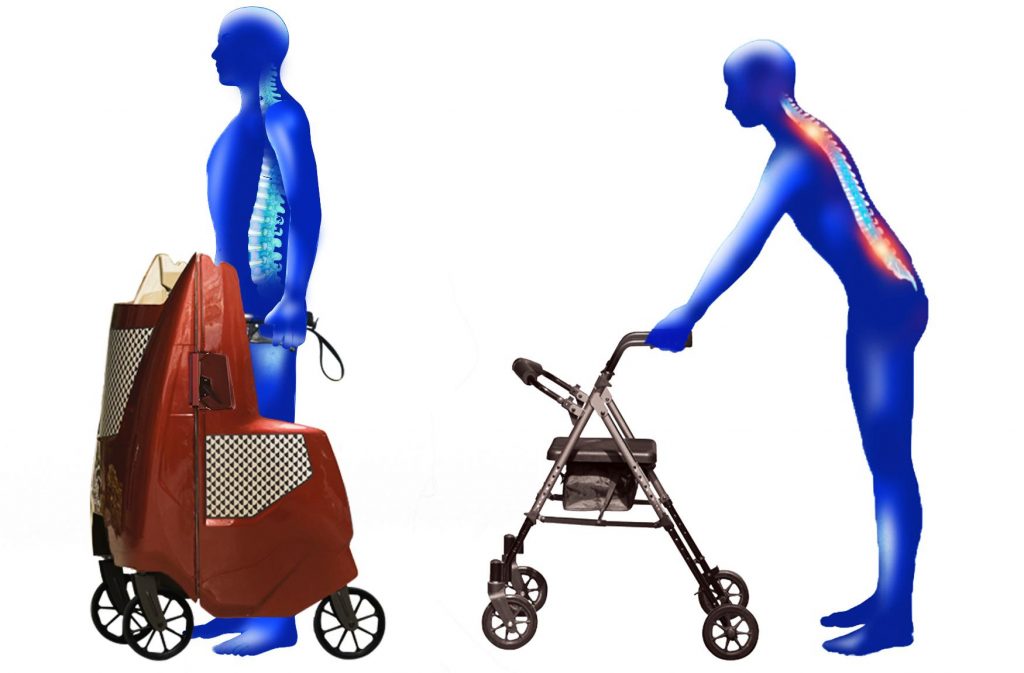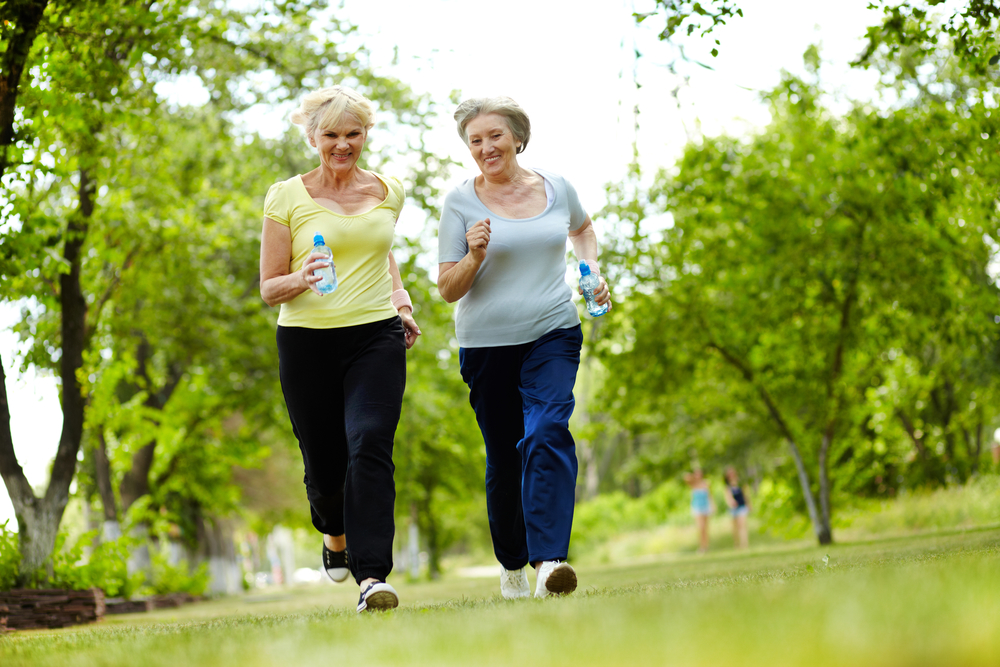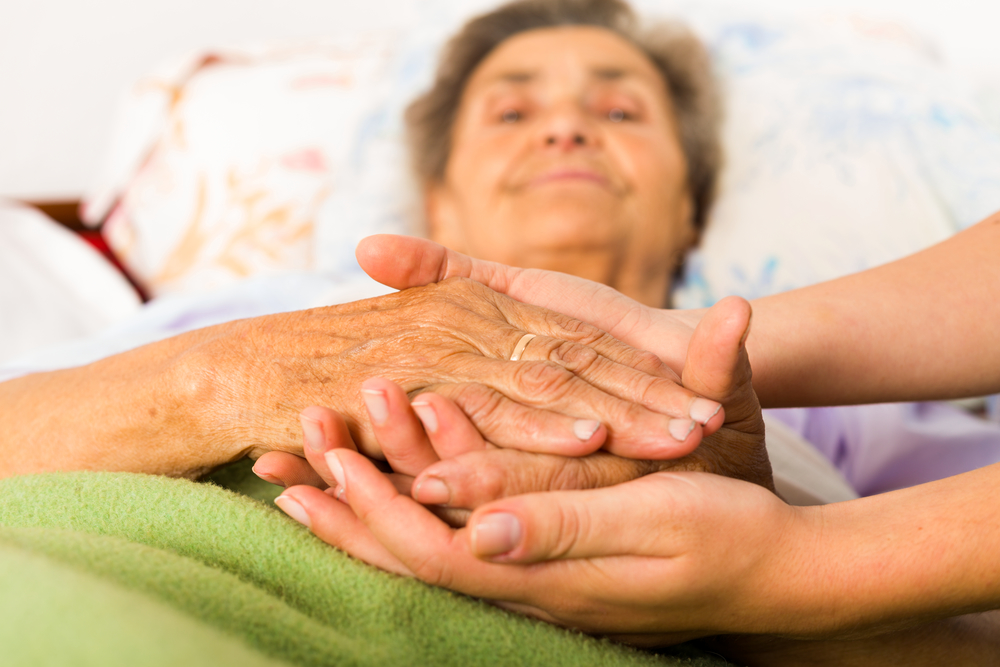09 Apr 2018
4 Weight Management Tips for Seniors
They say that as you age, your body is just not what it used to be. This can’t be more true than it is as you enter the senior years. Welcome to brittle bones, protruding middles, and watching everything begin to sag. Although aging and the signs of aging are inevitable, it is possible to stay healthy and maintain a healthy weight.
Here are a Four Weight Management Tips for Seniors
Stretch
According to the Stretch Coach, stretching is the “process of placing particular parts of the body into a position that will lengthen, or elongate, the muscles and associated soft tissues”. Have you ever noticed that getting shorter seems to be a part of the “growing old” packaged deal? It doesn’t have to be that way. Not only can stretching lengthen your body, it can also keep the blood and circulation flowing and increase your range of motion which leads to a better quality of life.
Move Your Body
Exercise is great for managing your weight. It doesn’t have to be strenuous. Consistency is more important. You can take a walk in the evening after your dinner. Swim classes are great low-impact workouts. Even regular yard work can be great for your health. Be sure to consult with your doctor before you start any exercise routine.
Eat Sensibly
It would be tempting to reduce your calories as you age, because the fat just doesn’t melt off like it used to do. Just don’t starve yourself or be too obsessed with counting calories. Make sure you are getting healthy portions of fruit, vegetables, healthy fats and healthy proteins. As you make healthier food choices, you should be able to notice that you have more energy, a clearer head, and possibly some healthy weight loss!
Get a Good Night’s Sleep
The quality of sleep you get the night before affects everything that happens the next day. It affects your mood and your cravings. Yes, if you get little to no sleep, you will crave those not so healthy sweet or salty snacks. In addition, a good night’s sleep helps keep your hormones balanced. When everything is balanced, you can more easily maintain your weight.
Weight management is tricky at any age. As a senior, you want to do your best to keep your body strong and healthy. This makes for a greater quality of life. So lace up those shoes, grab a buddy and take a walk around the block, or go walking solo. To your health!
Across our lifespan, we roll out the excuses not to exercise. We refute the research and claim we are the exception to the rules. As we age, the question becomes “Why bother at this point?” For the benefit of your health (or a senior loved one), let us clear up a few faulty statements about exercise and aging.
Physical Activity Proves Beneficial for Seniors – Exercise Myths Busted
It’s Too Late to Start Exercising at My Age
Beginning a fitness routine at any age offers benefits. The sedentary lifestyle which plagues the senior population raises the risk of cancer, coronary heart disease, depression and anxiety. Muscle integrity decreases, and the risk of injury increases. Plus, physical activity improves mental fitness.
Arthritis (or Osteoporosis) Limits My Ability to Exercise
On the contrary, chronic conditions, like arthritis and osteoporosis, benefit from physical activity. Exercise combats joint pain and fatigue by increasing muscle mass, bone strength and flexibility. While you need to adjust the type of activity you pursue, inactivity worsens symptoms. Furthermore, a sedentary lifestyle correlates with obesity, type 2 diabetes and cancer. Getting active reduces the prevalence of such conditions.
I Hate to Workout
Good news: Staying physically active does not require you to “workout”. It simply means you need to move. Finding activities which you enjoy reaps greater benefits than ones you dread. If you are social, try a group exercise class. For water lovers, swim at your local pool. If family is your passion, chase your grandchildren around the backyard. Walking the mall with friends, hiking a local park, gardening, dance and even sex count as exercise.
The Gym is Expensive (Besides, it is for the Young)
Just as you can choose a physical activity you enjoy, you must find a place you are comfortable getting fit. After all, if you never go, the gym does you no good.
Check out:
- Gyms with senior class offerings
- A Silver Sneakers program at your local YMCA or gym
- Quieter times of day to workout i.e. mid afternoon
- Classes modified for fitness level, disability or sensory loss
Senior living communities and services departments cater exercise programs to an older population, if you are still uncomfortable at the gym.
Exercise is Unsafe for Me
In addition to chronic conditions, the risk of falls, or the presence of Alzheimer’s disease or dementia keeps seniors from exercising out of concern for safety. However, physical activities decrease the risk of falls by increasing balance and coordination. And, they aid in sleep, cognitive function and appetite, while reducing agitation, memory loss and wandering in people with these conditions.
In short, stop believing the myths and get moving. Physical activity is beneficial for seniors.
08 Dec 2017
How to Treat and Prevent Osteoporosis
Osteoporosis is a disease that reduces the density and quality of the bones. It develops over time and can eventually become quite debilitating. But, there is good news, if you have osteoporosis, there are treatments to lessen bone loss and decrease the risks of the disease. The better news is, if you take a few easy precautions, the condition is preventable altogether. Keep reading for helpful tips for treating this condition if you have it, and preventing it if you do not.
Preventing Osteoporosis
Preventing osteoporosis is easy. The key is to make a few lifestyle changes that will not only help to prevent this condition, but ultimately will help your overall health as well. To get you going on the path the healthy bones, try some of these ideas:
- Alter your diet
Preventing osteoporosis is all about strengthening your bones, which starts with the foods you feed your body. Increasing your lean protein intake is a great place to start. Also, add foods that are rich in vitamin D and calcium as well.
- Calcium
It is no secret that calcium is a key nutrient in healthy bones. Adults should aim to get about 1,000 mg of calcium every day. Postmenopausal women should increase it to 1,200 mg daily. It is best to get your calcium from food sources, such as dairy. If you cannot get enough calcium through the food you eat, taking supplements can help make up the difference. Be careful not to exceed 2,000 mg of calcium daily.
- Vitamin D
Vitamin D works hand in hand with calcium. Older men and postmenopausal women should aim for 800 mg daily. Drink milk that contains this important vitamin or take supplements. You can also get vitamin D through exposure to natural sunlight. Just a few minutes daily can help increase your level of vitamin D without greatly increasing your risk of skin cancer.
- Exercise
Exercise has many benefits, and increasing bone mass is one of them. Engaging in light exercise for 30 minutes three times a week is all it takes to keep your bones healthy.
- Quit smoking
There are many reasons to quit smoking. Improving your bone health is high on the list. Cigarettes can speed bone loss, so, the earlier you stop, the sooner your bones can start getting stronger.
Treating Osteoporosis
If you already have osteoporosis, follow some of these steps to help manage and treat it.
- Medication
There are many medications available that help treat the symptoms of osteoporosis. Medications are great for people who already have bone density loss and are already at high risk for bone fracture.
- Add calcium and vitamin D to your diet
These nutrients are just as good at treating osteoporosis as they are for preventing it. So, even if you were not able to prevent the condition, increase your intake of them either through diet or supplementation.
- Avoid alcohol and caffeine
Excessive amounts of alcohol and caffeine can have an adverse effect on your bones. Since your bone health is already compromised with osteoporosis, it is best to use alcohol and caffeine in moderation or avoid them altogether. Reducing alcohol consumption also helps reduce the chance of falling, which can be hazardous to those with osteoporosis.
- Exercise and quit smoking
The benefits of exercise and liabilities of smoking will both continue even though osteoporosis has set in. So, ditch the cigarettes and ramp up your exercise regime.
- Hormone replacement therapy (HRT)
Hormone replacement therapy is often a good idea for postmenopausal women. Estrogen is known to help strengthen bones and prevent fractures. It can be prescribed on its one or with progestin. There are potential risks with HRT, so doctors tend to not prescribe it just for osteoporosis.
06 Nov 2017
4 Ways to Prevent Holiday Depression in Seniors
The holiday season can be stressful, especially for seniors. As we get older, families become busy with their daily lives and together time is often overlooked. In many cases, the holidays become a time of depression for seniors, who may have lost loved ones, suffer from chronic health issues, or are unable to travel to visit friends or family.
Fortunately, we can take steps to prevent holiday depression for seniors. With a little awareness and compassion, we can turn this time of year back into a cheerful memory for our elderly loved ones and better our lives as well. Caregivers in senior-care facilities can also play a big part of alleviating holiday depression in seniors.
4 Ways to Prevent Holiday Depression in Seniors
-
Look Out for Signs of Depression
The first step to preventing holiday depression in seniors is knowing what to look out for. While it’s natural to feel a little blue during the holidays, there is a big difference between temporary sadness and depression.
Be on the lookout for symptoms of depression, like change in appetite or sleeping patterns, fatigue or lack of interest in activities your loved one previously enjoyed. To help gauge their depression, use the Geriatric Depression Scale – a list of yes or no questions that can help you determine the level of depression your family member or tenant may be suffering from.
-
Plan Outings and Activities
In many cases, senior depression comes about by not having enough to do during the holidays. During a season that’s usually considered busy and cheerful, too much free time can cause seniors to feel as if they are missing out on the joy the season once brought them.
Spend some time with your family member or senior residents by planning holiday-centric activities. Drive through a light festival, make gingerbread houses or take them to complete some holiday shopping. Involve your other family members too, if they are able to join.
-
Take a Trip Down Memory Lane
If your senior loved one has recently undergone some life changes (the loss of a loved one or relocating to a care facility), they may need some perking up during the traditional season.
Encourage them to share stories from their youth about the holidays and ask them questions to keep them engaged. Look through old photo albums or home videos and share some memories of your own. Rekindling old memories can help seniors cope during this nostalgic season.
Make New Traditions
Many seniors experience sadness during the holidays due to lost traditions. In many cases, the people they may have once celebrated with are no longer here.
To help your loved one, offer trying a new tradition that everyone can enjoy, while still paying respects to those you may have lost. Building new memories will help depressed seniors find joy during what otherwise could have been a bleak season.
Adaptive archery is just like regular archery. The athlete uses a bow to aim and propel an arrow to hit a target. Archery is an adaptable sport, and people of all ages, genders and abilities can participate. Archery athletes with various physical or cognitive impairments can easily compete alongside other athletes.
Benefits of Competing in Adaptive Archery
Participation and competition in adaptive archery can be a way for athletes to be active and socialize. It can be an opportunity to learn something new and a way for athletes to spend time with others who have similar impairment issues or no impairment issues at all. Athletes must learn not only the fundamentals of the sport, but also how these fundamentals apply to them. For individuals who aspire to do more, there may be the option of making a U.S. Paralympic or World Championship Team.
Equipment Options
When selecting a bow there are two choices: recurve and compound. Both styles of bow offer advantages and disadvantages, and both options can be modified for use by adaptive athletes.
Recurve Bows
A recurve bow, also known as a traditional bow, consists of a single bow body and a string that connects to the ends of the body. This is a very simple and effective design. When starting out in the sport of archery, it is recommended to begin with a recurve bow. Modern recurve bows are made from fiberglass or carbon for strength and durability.
Compound Bows
Compound bows feature an updated, more modern, design. The bow body is smaller and constructed from aluminum or carbon fiber. Pulleys are located on the ends of the body and strings are run through the pulleys. The pulley system requires less strength to use the bow, while also delivering more power in the delivery.
How to Make Archery Adaptive
For prospective archers, it is necessary to work with a trainer who can assess their ability and skill level and create a teaching and training plan structured to fit the individual’s needs. Specialized equipment may be necessary in order to train and compete. A bow can be modified to make it possible for easy operation by an adaptive athlete.
Getting Started in Adaptive Archery
Training and practicing can be a fun activity for adaptive athletes interested in archery. Learning the proper techniques and skills can build discipline and self esteem. This is an activity adaptive athletes can learn and practice alongside other athletes of different abilities and skill levels. This can create understanding and give the athletes something they can learn more about and grow into. In some cases, athletes can go on to compete.
15 Sep 2017
Discover the Wonders of the Upright Walker
Over six million people in the United States need to use some type of assistive device to help with mobility. It’s not only the elderly who often need the aid of a walker, wheelchair, or cane. Many young and middle-aged individuals face health issues that make walking unassisted difficult. Multiple sclerosis, Parkinson’s, and Fibromyalgia are a few of the disorders that affect people’s ability to walk. With the advancements in technology and science, strides have been made in aiding people with disabilities. One such advancement is that of the upright walker. This newer product gives people another option for getting around gracefully. Let’s take a closer look at some of the details of the upright walker.
Helps you stand up tall
Traditional walkers are constructed to reach right about the waist level. When using a traditional walker, you set it right in front of you and step behind it. This means you must stoop over and lean down into the walker to walk. The upright walker got its name in part because it helps the user stand upright when walking. The handles are elevated to a height that allows people to have the walker at a comfortable height. People have the ability to look straight ahead instead of down at the pavement. This makes them more safe and comfortable.
Framework for the upright walker provides safety
The framework of the upright walker surrounds the user on both sides and allows for a footstep of room. This means as people move forward, they are boxed in on each side for their entire movement. With traditional walkers the frame is set in front of you so that if you stumble to the side for any reason, there is nothing next to you. The upright walker is beside you every step of the way. If you would stumble to the side, you would have the support of the framework on both sides to help balance you.
Shock absorbers and brakes
The upright walker is somewhat like a bike with mini tires and shock absorbers. This helps move you along bumpy terrain without all the jostling. Uneven surfaces are no problem with the use of an upright walker. In addition, you grip handles with brakes that extend from the armrests. If you need to stop yourself from moving along or you’re going down a slight hill and need some brake power, you will have it at your fingertips.
Discover the ease and comfort of walking with the upright walker. Whether you need to go around the block or to the mailbox, using this innovative product will make walking so much easier.
16 Aug 2017
Experiencing Depression as a Senior
It is believed that around 25% of all seniors will suffer from depression at some point – a higher proportion than the rest of the adult population. Thankfully, as a society we are becoming more comfortable talking about mental illness generally and depression specifically – so knowing what the signs are, and steps that can be taken to address possible depression can be useful if you think you or a loved one may be suffering from this illness.
What Is Depression?
While all of us are likely to experience feelings of sadness at different points in life, depression differs in that these feelings typically last for longer than two weeks and can impact everyday functioning. The DSM-5 measure classifies depression as experiencing at least five symptoms for an extended period of time from a list of issues such as daily fatigue, insomnia, diminished interest in all activities and feelings of worthlessness.
Why Is Depression Prevalent In The Senior Population?
There are many factors that may contribute to increased risk of depression in the senior population. There are some life changes that occur with aging that may trigger feelings of depression – losses of various kinds: from the death of a loved one, to the loss of physical abilities and associated freedoms, to the loss of social support systems. With the changes in family structure, and grown children being more geographically dispersed, there is a greater chance of an elderly person living in isolation and experiencing loneliness and depression as a result. With the onset of other illnesses, depression may be more likely to occur either as a result of the illness itself or as a side-effect of drugs used to treat the primary issue.
Options To Treat Depression
If you think you or a loved one may be suffering from depression, a good first step is to discuss your concerns with your Primary Care Physician. There may be changes that can be made to an existing treatment plan that could alleviate the symptoms being experienced, along with other treatments such as counseling and psychotherapy, or medication to specifically address depression.
Along with medical interventions, building a support system can be very helpful for someone suffering from depression. Finding strategies to keep in contact with the outside world can be beneficial, be that by meeting up with friends, joining special interest groups with people who share similar interests, or volunteering. It’s important to know that you are not alone, and that help is out there.
27 Jun 2017
Seniors Get Out And Enjoy Yourself This Summer
Summer is here, and it is time to get outside and soak up that sunlight! The days are long and beautiful, and there are just too many fun, relaxing and wonderful things to do than to stay cooped up in the house. While you are out and about taking in the summer weather, be mindful of the heat and wear sunscreen! Always practice good safety habits. Here are some ideas that hopefully will help keep you active whether inside or outside and in a positive frame of mind!
Exercise Ideas
Flea Markets and Craft shows
Walking around these events can be a fun way to get out, get a little exercise in, and find some good deals.
Nature Walks and Hikes
Set aside some time to go on a local nature walk. If it is not as easy to get back to mother nature due to where you live, consider a trip to the zoo for the day, where you can take in the animals at a leisurely pace.
Relaxing and Mobility-Friendly Ideas
Go Fishing
Whether you are going on a catch and release trip or to bring home dinner for, fishing can be a great way to spend a summer day! While you’re there why not have a picnic for lunch as well.
Watch an Outdoor Movie or Concert
Community events have gotten more and more popular recently and getting out in public to take in not only the atmosphere but a show is a great way to get out of the house for an evening.
Social Ideas
Join a Book Club
Summer book clubs sometimes meet in parks, but even if they meet indoors at least you’re among like-minded company and out of your house.
Volunteer
Check your local library and see if they would be interested in kids story time readings or other special events.
Other ideas
Sporting events
Anything from the neighborhood ball game to grandchildren swim meets can be a great way to spend the day. If you live in a larger town you might also have a local baseball team or even a professional sporting event.
Staycation Tourist
Depending on where you live many tourist cities offer everything from trolley rides to horse-pulled carriage and walking tours. Get out and take the time to see your city and all its sights.
22 May 2017
Who Needs a Stairlift?
Stairlifts are great inventions that can really improve the lives of many people. It can be a strange thing to feel like you are cut off from parts of your own home. However, for those who find it difficult to move up and down levels in their house, this can be exactly the case. People who have trouble with stairs often find themselves adjusting their lives so that trips up or down the stairs aren’t necessary. This shouldn’t have to happen, stairlifts are a way for people in this situation to be able to gain a little bit of their mobility and independence back. But, who really can benefit from something like this?
The Elderly
If you’re thinking of a stairlift, you probably have an image in mind of an older person using it to go up and down stairs. This might be stereotypical, but that doesn’t mean it’s not true. As we age, we find that things which were once easy and taken for granted, like stairs, become difficult, if not impossible. For some, downsizing is the answer. For others, though, this is not an option they want to consider. Rather than shutting off the upstairs, a stairlift can provide the solution.
The Disabled
You don’t have to be a senior citizen to need and enjoy the benefits of a stairlift, however. If someone suffers from a disability that makes it difficult to walk, concentrate, keep their balance, or in some other way hampers their mobility, a stairlift can help them gain a small measure of independence. This can help someone whether they are 18 or 80.
The Injured
A third type of person who can benefit from a stairlift is one who has been injured. Maybe it’s a temporary injury, maybe it’s more long term. Either way, while the injury is getting in the way of their ability to move, a stairlift can help. In some ways, those who are temporarily unable to use the stairs are in a worse situation than those who have resigned themselves to it being a permanent condition, because there’s a good chance they haven’t had time yet to rearrange their life to deal with it. This means a frequent need to travel up and down the stairs, which can be difficult, painful, and often dangerous. The good news, though, is that stairlifts don’t have to be permanent, as they can be uninstalled when the need for them is over. Rented ones may be good for situations like this.
So, whether you’re young or old, a stairlift might be the solution you have been waiting for. If you’re tired of not being able to use your entire house, or depending on others to help you get around, then it’s time to look into taking your independence back. Call us today!
One of the most difficult things about seeing your loved one grow older is watching his or her mental and physical abilities decline. Old age is inevitable and many people are prepared to care for seniors as they age, but that doesn’t make it any easier when your loved one suddenly can’t remember details the way they did before or can’t participate in the same physical activities they used to love. If you are starting to notice a decline in your loved one’s abilities, the most important thing is to communicate, so that both of you are prepared for what will happen in the future and understand how best to work through it.
Make sure that when you start the conversation, both of you are in a comfortable place, preferably somewhere that they feel at home. Throughout the discussion, make sure to reference how you feel, and ask how they feel. Try framing sentences around your inner feelings and concerns: “I’m worried about you because…” or “I care about you a lot, which is why I’m telling you this…” are phrases that work well. This helps show the other person that you are coming from a place of care and ultimately reinforces the idea that you will work through these problems together, no matter what.
With that said, don’t shy away from the tough parts of the conversation. Talking about subjects such as financial and legal problems may be difficult, but it is important to discuss how you are going to be able to handle your loved one’s ability to drive, deal with bank statements, or fill out medical paperwork. In many cases, the other person is used to independence and does not want to give it up; while this is understandable, you should do your best to repeat that you care about them and want them to be healthy and happy, which is why it is necessary for you to intervene in these matters.
This applies to other issues such as the possibility of hiring a caretaker or installing special equipment in your loved one’s home in order to better accommodate their personal needs. Honesty is key: emphasize the idea that although it is difficult, these changes are necessary, because without them, he or she will not be able to live a safe and comfortable life. Ultimately, show them that you are there in their best interest, and that although they are going through a difficult transition, they will deal with it with your help.
